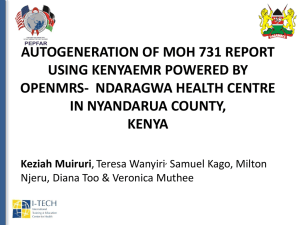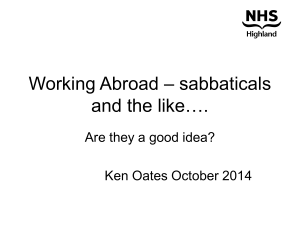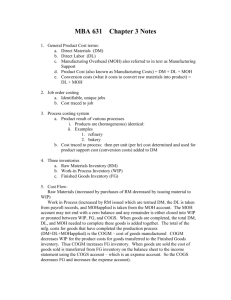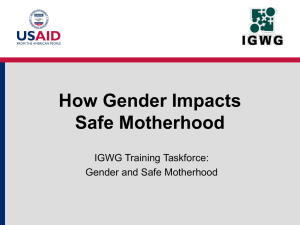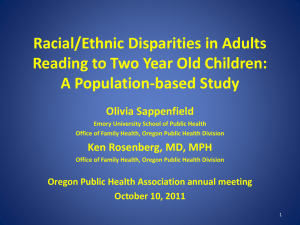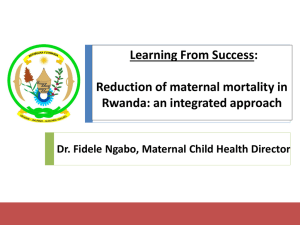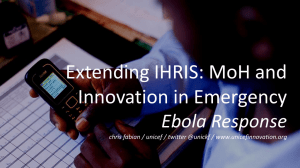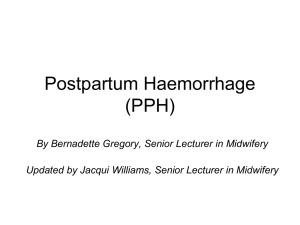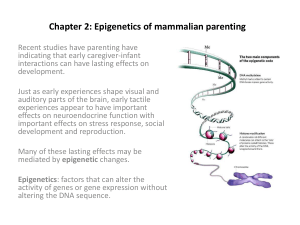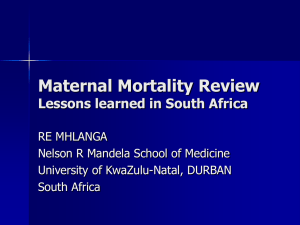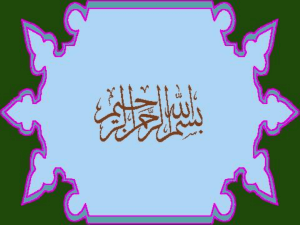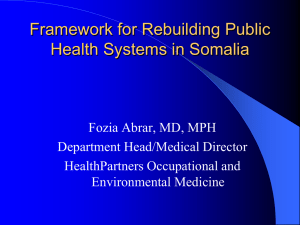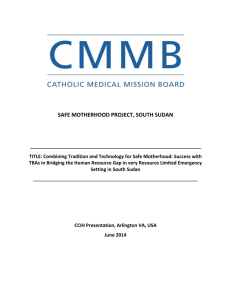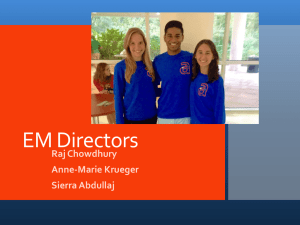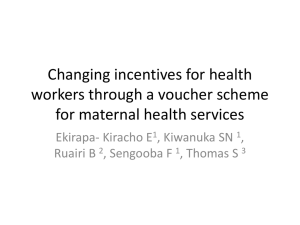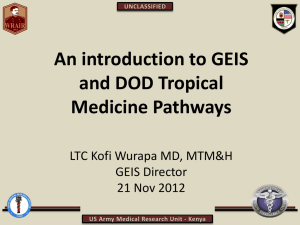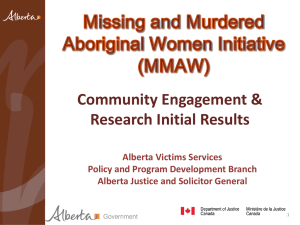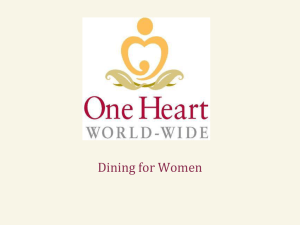Promoting safe motherhood amongst the Miskitu and
advertisement
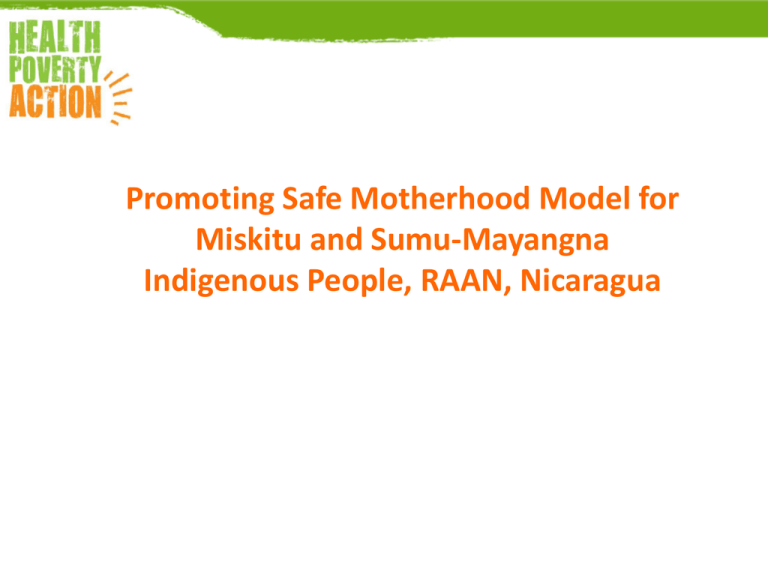
Promoting Safe Motherhood Model for Miskitu and Sumu-Mayangna Indigenous People, RAAN, Nicaragua Vision A world in which the poorest and most marginalised enjoy their right to health Mission • Work with the poorest and most marginalised communities in Africa, Asia and Latin America, often in difficult environments • Enable these communities to achieve both immediate and long-term improvements to their health, as a fundamental human right • Campaign for changes in policies and practices to create and sustain good health among the world’s poorest people. WORKING IN NICARAGUA SINCE 1993 NORTH ATLANTIC AUTONOMOUS REGION • Historically excluded from the socio-economical and political life of the country • Different Political organization: Autonomous Regions • 28% of the national territory, 32,819 Km2 • 314,130 inhabitants: 42% Mestizos, 40% Miskitus, 10% Creoles y 8% Sumu-Mayagnas • 70.9% living in extreme poverty: HDI 0.466 (low) • Maternal Mortality Rate, 207.7/100,000 live births (2008), 18% of national Maternal Death. 69% low level education, 62% IP • Worst determinants of health in the country Who are we working with? • Indigenous People and Ethnic Communities – – – – Miskitus Sumu-Mayagnas Mestizos Creoles • Woman, Men, Children, Youth, especially those living in the remotest rural areas Who are the people? • Identity and sense of belonging • Different Cosmo vision • Different language • Different beliefs and practices • Own social and political organization • Different learning system • Holistic understanding of health To be a Miskitu Woman •Miskitu Women: Take care of the household and children, work with their husbands, work in the field, fish in the sea and rivers, cut the wood, participate in community activities •Among the Miskitu there is no respect for woman. Women have no rights and are frequently ill-treated. •Are raised to become housewives, so instead of going to school they learn how to work and how to serve •Not valued as contributing towards the construction of a multi ethnic, multilingual and multicultural, inclusive nation HOW DO WE SUPPORT GOVERNMENT POLICIES? • • • • • • • • • Participatory Methodology Revitalization of culture Long Term Commitment Building and strengthening government health services Complementing the government work through Health Education, Health Promotion Accompanying the agents of change by Facilitating community organization and development Building capacities and alliances at all level (networking) Advocating (Political Incidence) with the communities - bottom up approach Sharing information and learning, constantly redesigning and redefining programme Lessons Learned in Nicaragua Where are we working? Puerto Cabezas 10 Miskitu Villages Waspam 12 Miskitu Villages 1 Sumu-Mayangna Village DIRECT BENEFICIARIES in Nicaragua • 496 pregnant women every year • 3,630 women of reproductive age (15-49 years) every year • 446 newborns every year • 54 Traditional Birth Attendants • 23 Community Health Commissions (138 members) • 56 Health workers from the MOH RAC Health Commission Health Secretariat Socio- Anthropological Research: • Antenatal care, birth attention, after birth and new born caring practices among the Miskitu and SumuMayangna Woman • Evolution of TBA role • Role of MOH units (health post, health centres, hospital) Baseline of disabilities after birth attention with TBA and health staff Municipal Health Commissions Service Managers MOH Service Providers MOH Service Providers: TBA Tec. Facilitators: Sociologist Anthropologist Gynaecologist Woman, Men CHC Safe Motherhood Model of Attention culturally appropriate for Miskitu and SumuMayangnas IP SRH Policies “Here we have different cultures, so we expect that services to be provided according to ones culture, the one of each community. We are people of many cultures. Services need to be adapted for the people, so it would be good to dialogue with the communities and see how they want to be attended, if with traditional medicine or the other. Both the traditional medicine and the other, should work together” (Miskitu Woman) Why Culturally Appropiate? Implementation of the Culturally Appropriate Safe Motherhood Model within the RAAN Intercultural Health Model of Attention S i s t e m a ti z a ti o n MOH Serv. Providers: •Rehabilitation + equipping of units •Antenatal + Birth Attention Guidelines •Training • Supervision capacity building TBA •Equipment •Training manual •Training •Follow up with MOH Health Service Managers: •Information system + referral system •Communication strategy and campaign CHC: •Equipment x role •Training manual •Training •Follow up with MOH Capacity building MOH + Health Secretariat to manage + replicate model Improved Services at Health Units Training Manuals IMPACT ON DAILY PRACTICE Evolution of TBA role TBAs are important members of the community, and were the first choice for providing birth assistance, with a high level of community trust. TBAs are formally recognized members of the culturally appropriate safe motherhood model, alongside the health services providers. “In the past in the communities we feared being assisted by the TBAs, but we also Training TBAs to recognize danger signs in pregnant women reduces the feared being attended at the hospital. Now this fear does not exist anymore.” first delay – in seeking skilled help – which leads to maternal morbidity and Erbalina Masis mortality. Lessons Learned- Process Design and implementation of appropriate model of attention: • Organization of the community • Research on cultural practices, Cosmo-vision • Participatory design process (consultations/ validation): community (CHC), authorities at all level, other organizations, service providers, woman and men • Consensus between beneficiaries, authorities, specialist: Role and responsibilities, human resources and equipment needs, training needs, working guidelines, information needs for monitoring and evaluation • Approval for implementation • Communication strategy and campaigns • Rehabilitation facilities, equipping, training, supervision, monitoring (data collection) • Systematization of process (adjustments, sharing and replication) all along Lessons Learned – People Facilitators: • Personal Identity, open, free of prejudices towards other ethnic groups • Language • Understand and respect IP traditional practices • Experience working with communities • Staff with health profile or experience working health field • Address health with a rights based approach • Gain community trust, respect their life cycle (rest day, farming) Health Poverty Action’s Mothers on the Margins campaign, launched in June, highlights the right to maternal health of women from indigenous communities and other cultural minorities in the developing world. Mothers on the Margins Objectives: • Raising awareness of indigenous women’s maternal health inequities. • Highlighting innovative solutions in partnership with communities themselves. • Securing commitments from governments, international community and developing country governments on specific policy areas. Mothers on the Margins What we are asking for: • Culturally appropriate, accessible maternal health services, free from prejudice and discrimination. • A voice for indigenous mothers to participate and make decisions about their own health and wider development outcomes. • Progress against poverty and poor health to be tracked by breaking down data into ethnic groups. Mothers on the Margins Why and why now now? • International and UK focus on maternal health. • MDG to reduce maternal mortality by three-quarters is the most off track. • Equity being highlighted as a major gap in the MDGs – they lack a focus on the poorest and hardest to reach – including indigenous women. Achievements so far include: • Issue raised in UN MDG Summit & is now a part of Global Strategy on MCH.
